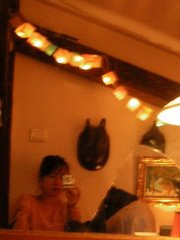
This year marks the fourth hundredth anniversary of the death of Matteo Ricci (which occurred on May 11, 1610). To commemorate his contribution to East-West cultural exchange and reinforce its commitment to its public service ideals, the National Central Library of Taiwan along with the Taipei Ricci Institute organize events such as the conference of Professor Nicolas Standaert, S.J. (Leuven University): "Sino-European Displacements: The Circulation of Prints between Europe and China" which will be held on April 16th in Taipei, at the briefing room of the National Central Library. Professor Standaert is one of the world’s foremost expert on cultural exchanges between Europe and China during the Late Ming and Early Qing dynasties, and will give a richly illustrated conference – do not miss it!
Also, by attending this conference you will have the opportunity to be among the first to visit the exhibit around Matteo Ricci held at the aforesaid Library: The Jesuits’ Encounter with Chinese Scholars: A Meeting of East and West -- An Exhibition Commemorating the 400th Anniversary of Matteo Ricci. The Institute has been associating with Taiwan National Central Library and the Ministry of Foreign Affairs for organizing this exhibit which includes images of pieces held in the treasured collections of the Vatican Library, the headquarters of the Society of Jesus in Rome, the Archives of the Society of Jesus, and the Pontificia Università Gregoriana. The exhibit takes place in a new research room into which the library of the Institute has now been transferred. This research room is also dedicated to the new research focus of the Institute: the development of Pacific studies in Taiwan. (More information here).
Also, on April 20 at 2.30pm, Gjon Kolndrekaj, the director of the documentary film “Matteo Ricci, a Jesuit in the Realm of the Dragon,” and Prof. Antonella Tulli of the Department of Italian Language and Literature at Fu Jen Catholic University have been invited to hold a symposium on the film.
We hope that you will join us for one or all these events, register here or contact Meifang Tsai (mei _at_erenlai.com) !





















